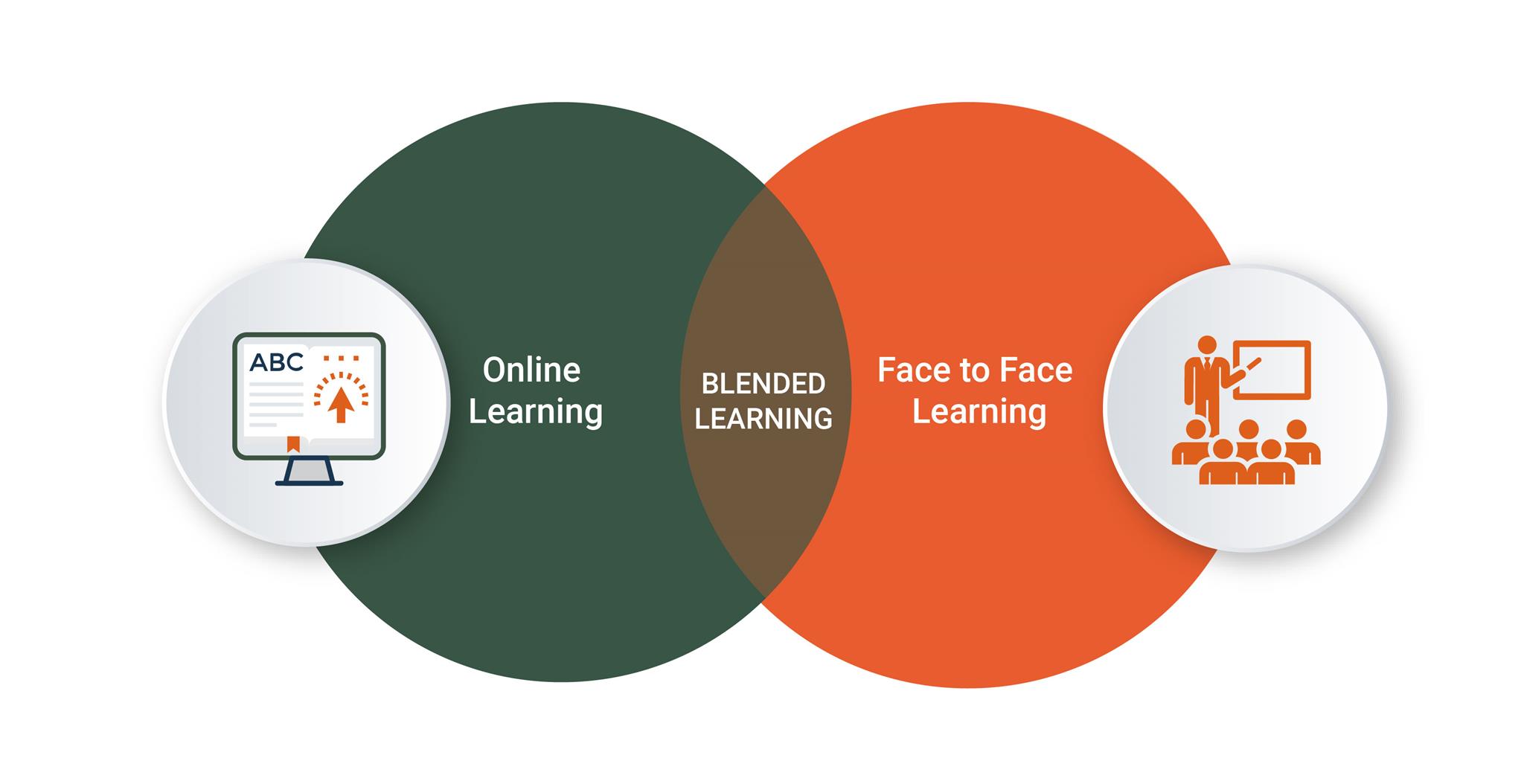While growing up, probably the only way of knowledge transfer from teachers to students was through a traditional classroom setting. As kids of the 90’s, we hardly had any access to computers at school let alone having one at home. The dawn of the new millennium brought us much closer to desktops and laptops. Now, these devices were being used to complete assignments, do research and swimming through a vast sea of knowledge. Higher education institutions saw this change and adopted it fervently. The concept of Blended Learning also started gaining prominence during this time. Blended learning as a concept is often mentioned in the same vein as personalized learning and hybrid learning sometimes even interchangeably so. It would actually be better if we try to define blended learning to understand it better.
What is Blended Learning?
It is an educational approach that combines the brick-and-mortar classroom setting with online learning medium. Unlike popular beliefs, blended learning doesn’t do away with teachers or instructors. In fact, it is imperative that both the instructor and the student are physically present. The online learning medium provides some element of student control over the time, pace, place, and path of study. This mix-mode of learning is what is being considered as a benchmark by educationalists.

Blended Learning Models
This is where blended learning becomes a bit more complex. Educationalists and researchers alike have found it difficult to agree on a common definition for this term. There is even a bit of disagreement on the number and type of models. The reason is actually quite simple - just like the term itself, various models of blended learning can be used together. Here are the six most widely agreed upon models of blended learning:
- Face-to-face driver model - This model resembles the traditional classroom setting the most. Here the instructor in addition to giving face-to-face instruction also adds digital tools for improved student learning.
- Online driver model - Thematically opposite to face-to-face driver model, the entire course is taught through an online medium. The instructors too, can answer questions and provide support online. Although face-to-face meetings can also be scheduled.
- Rotation model - Here the students alternate between scheduled classroom study, laboratory setting, and online study. This model is more prominently being used across elementary schools.
- Laboratory model - In this model, the course content is delivered online to a comparatively small group of students in a location or learning center. While invigilators are present, they only guide the students. This model is most useful for courses that cannot be offered through traditional setting.
- Flex model - Blended learning programs under this model are offered online. Instructors are available for support and face-to-face consultation.
- Self-blend model - In this model, the students have the option of opting for online learning on top of existing classes. While it might cause a bit of overlap between the two forms, it is generally recommended for self-motivated students. The courses offered through this model can be accessed anywhere anytime.
Advantages
Some key advantages of blended learning are:
- The blended teaching methodology is better than purely online or purely face-to-face setting.
- Proven to be an effective learning tool for at-risk students.
- Helps in developing self-reliance and collaborative learning among students.
- Gives the option to the school or university to offer more courses as it reduces infrastructural costs.
- Better and effective use of school resources.
- Helps in assessing progress better.
- Assists students to learn at their own pace.
Disadvantages
Just like other educational theories and models, blended learning would be unsuccessful unless proper tools are used for implementing it. For instance, if the Learning Management System used for delivering course content is not up to date, reliable or easy to use then it would have a negative learning experience on individual students.
Useful tools for implementing blended learning
Here are some tools that would help your K-12 or higher education institute in implementing blended learning effectively -
- A good Learning Management System that allows you to share videos, content and answer questions from students from anyplace anytime.
- Curriculum Management System that allows you to effectively map courses with learning outcomes. This would, in turn, help you to track online learning progress.
- Flipped Classroom is another concept that can be used for effective learning. Instead of doing homework at home, students study course topics. Whereas, a classroom is used for discussions and presentations on topics of said courses.
Want to contribute?
We welcome thought leaders to share ideas and write for our blog.
Become a Guest Author →

